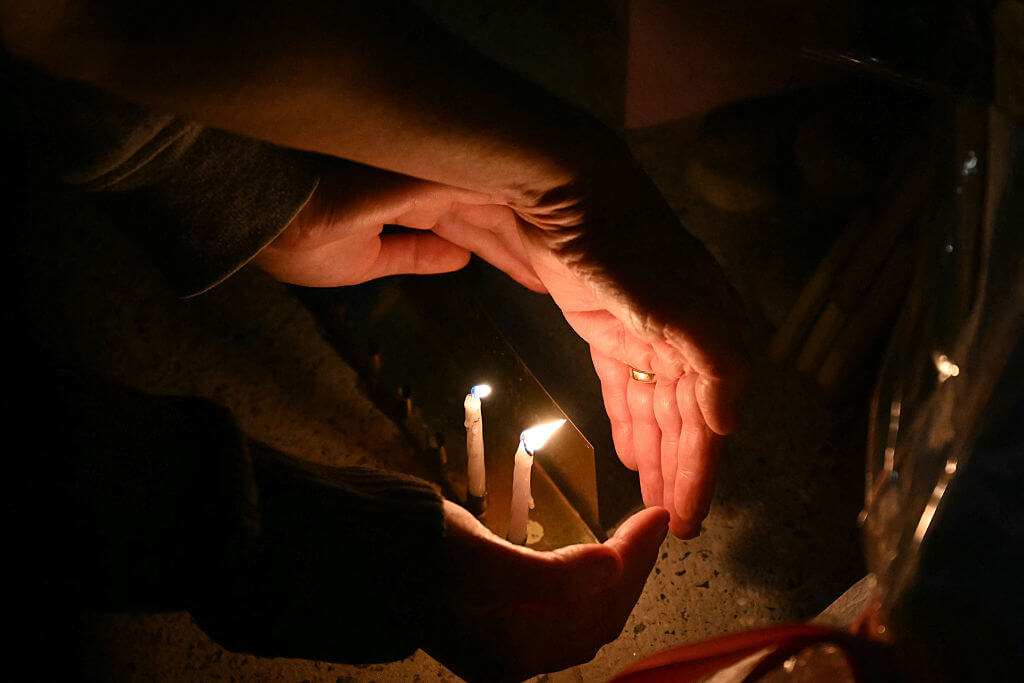Will President Donald Trump Unleash a Civil War Among Democrats — and Can They Recover?

Graphic by Angelie Zaslavsky
Waking up in America on November 9 felt a bit like stumbling into the middle of a science fiction movie. Everything was askew, out of place, upside down. All the familiar signposts of normality were wrong.
Every conventional indicator said Hillary Clinton was about to win a historic victory. Democrats would begin gearing up for a third term, continuing the progress made under President Obama, tackling immigration reform, addressing climate change and taking back the Supreme Court. The Republican Party, for its part, was going to collapse into civil war.
Instead the Republicans are preparing to take charge, led by the most radical, inexperienced and emotionally unstable president in memory. Firmly in control of all three branches of the federal government, Republicans are poised to usher in a new era of oil drilling, coal mining, repealing Obamacare and ending legal abortion.
Our allies are terrified. Markets are plummeting. America has gone off the rails, and everybody knows it except the American voter.
Democrats, meanwhile, stumble about in a daze. They’ve begun squaring off for the civil war that was supposed to happen to the Republicans.
You can hear the rumblings of the coming Democratic blowup in the two competing explanations of the Trump triumph. On one side are those who see Trump’s victory resulting from misogyny and racism rampant in the American heartland. On the other side are those who see it as payback for the Democrats’ decades-long abandonment of the white working class, their disregard for workers’ economic misery and loss of self-respect.
You might call it the coming showdown between the Clinton wing of the party and the Bernie Sanders-Elizabeth Warren wing. Identity politics vs. social democracy.
Both sides have a point. Trump did indeed run a campaign successfully designed to inflame racial and ethnic divisions and prejudices. What’s more, the voters’ willingness to overlook his appalling history with women suggests at the very least a moral blindness — and at worst, contempt.
On the other hand, it’s also true that Democrats have let themselves become identified over the years with a certain coastal, urban bohemianism. They’ve given an important voice to a school of progressivism that focuses on fighting for the rights of minorities and taking the majority for granted. On combating Middle America’s misogyny, racism and white privilege, without considering how this might leave Middle America feeling insulted. Unemployed steel workers in Pennsylvania don’t feel particularly privileged.
Misogyny? That’s part of the story, but only part. America may or may not be ready to elect a woman president.
But if Democrats were intent on testing the question — and willing to risk the possibility that it isn’t ready — then Hillary Clinton was the wrong candidate to try it. She herself acknowledged on several occasions that she isn’t a “natural politician” and lacks “charisma.”
She would have been a good president, perhaps a great one. But first she had to get elected. Americans consistently vote for charisma and likeability over sound policy. Expecting the public to overcome that habit when you’re also testing its gender awareness was a test too far.
Millions of formerly middle-class factory workers are now flipping burgers while the Thomas Friedmans and Bill Clintons of the world urge them to reinvent themselves. The new high-tech knowledge economy celebrated by Democratic intellectuals and entrepreneurs on the coasts is a meritocratic economy that rewards talent, imagination and intelligence.
Unfortunately, not everyone is talented. The old economy had rewards for muscle and even plain ordinariness. Now you’re punished for being ordinary.
Democrats managed to hold sway as a majority party for decades by maintaining Franklin Roosevelt’s New Deal coalition, the alliance of intellectuals, workers and minorities. When those forces turned on each other in the 1960s, the stage was set for the rise of the Reagan coalition and a Republican voting majority.
Even that is only a partial truth. Trump won the Electoral College but lost the popular vote, just as George W. Bush did when he defeated Al Gore in 2000.
Trump’s victory was, first of all, an artifact of the Electoral College. The system gives each state a delegation of electors equal to the state’s House and Senate delegations. House seats are apportioned among the states according to population, but Senate seats are not. Every state gets two senators, regardless of population. Wyoming has two senators, or one for every 292,000 people. California has two senators, or one for every 19.5 million.
The system inflates the voting power of the red states in the rural heartland. By sweeping the sparsely populated states between the coasts, Republicans get an automatic, unearned electoral advantage. Throw in Texas plus a few narrow victories in swing states like Florida and Ohio and you have a Bush-Trump formula for losing the vote but winning the White House.
What was different this year was that Trump won a swath of former Democratic strongholds in the so-called Rust Belt: Pennsylvania, Michigan and Wisconsin. This shouldn’t have been too great a surprise, since all three have been electing Republican governors, senators or both with some regularity of late. The Democrats’ assumption that they’d win those three states — especially Michigan and Wisconsin, with radically conservative governors and legislatures — was simply careless.
What can Democrats do now? To begin with, they must decide what they want to be. If they’re intent on remaining a coalition of minorities and progressives, they can look forward to winning back the presidency as America’s demography changes. But that process isn’t happening quite as fast as assumed.
Non-college whites — the white working class — remain by far the largest demographic group in the country, fully 44% of the population. College-educated whites, who were supposed to break Democratic this year for the first time, but didn’t, are another 22% or 23%.
Taken together, non-Hispanic whites constitute two-thirds of the population. That’s down from three-fourths a decade ago, and still declining. But they also turn out to vote more faithfully than the minorities and youth that Democrats count on. This causes disaster during midterm, non-presidential years, when Democrats stay home in droves, leaving the field to Republicans. That’s why Republicans dominate state governments — and hence, the House redistricting process.
Democrats like to boast that they’ve won six of the last seven presidential elections (including 2000, when they won the popular vote). Not exactly. Bill Clinton won in 1992 and 1996 with minorities of the popular vote, because third-party candidate Ross Perot siphoned off a big chunk of the Republican vote.
If the Democrats decide to continue building on their current coalition, demography will eventually give them a reliable majority that extends beyond the coasts. But by that time, the coasts may well be under seawater.
















